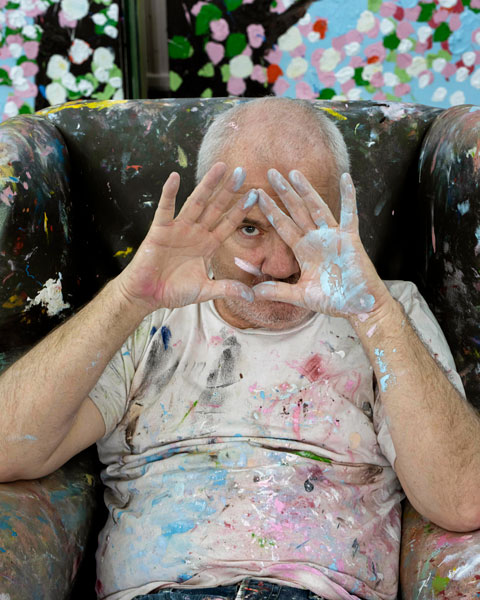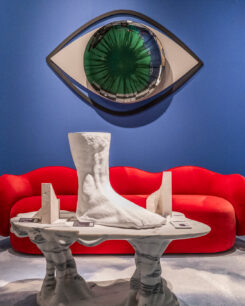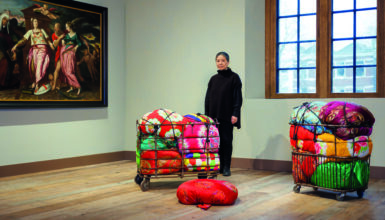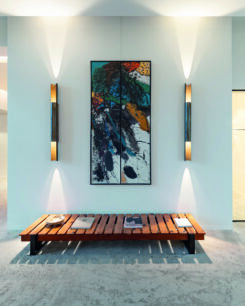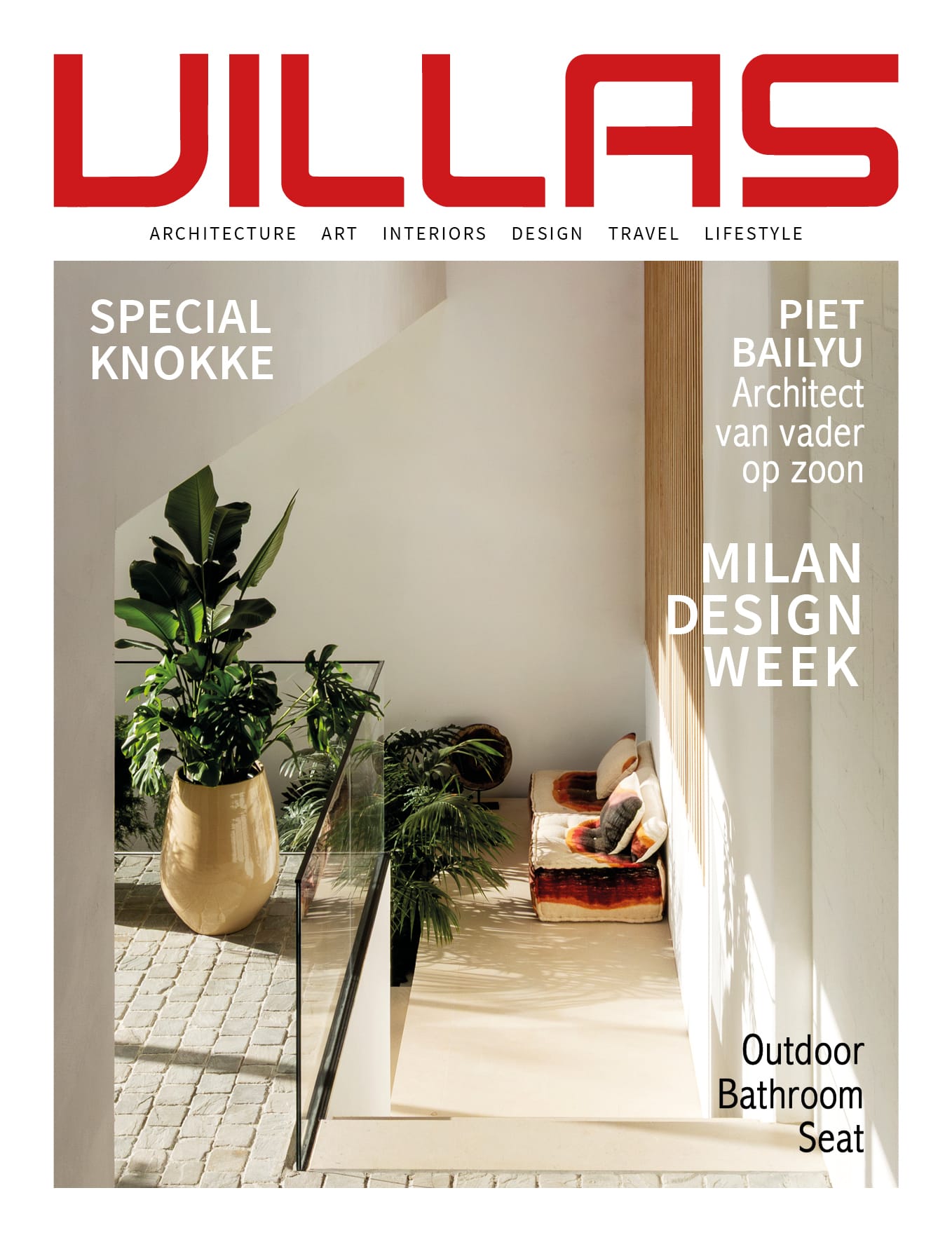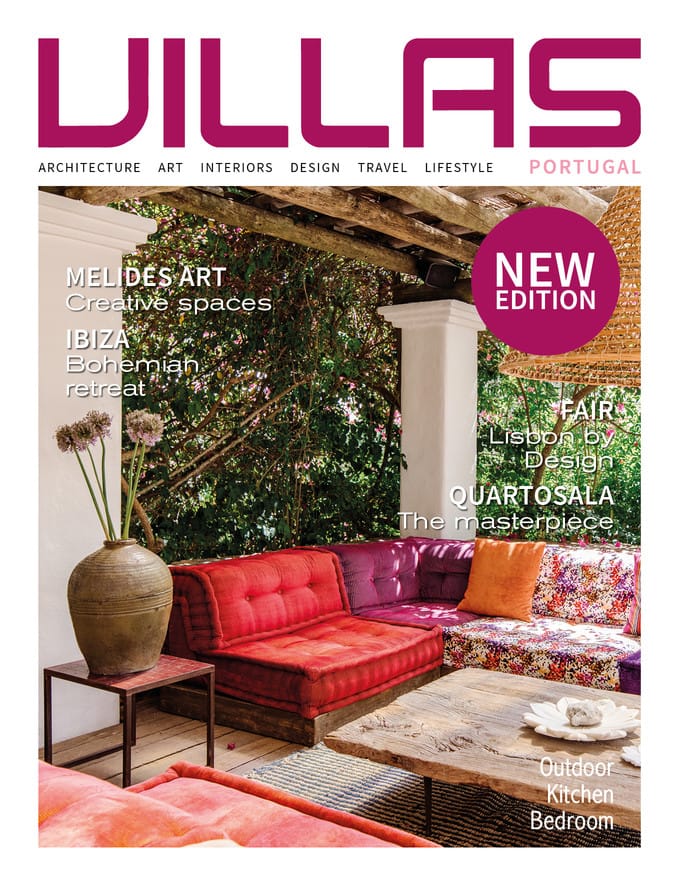Sommaire
A new addition to the portfolio of one of the world’s most cherished artists
At the ticket office of the Cartier Foundation for Contemporary Art, Damien Hirst’s “Cherry Blossoms” exhibition is reflected in the glass and metal framework of the imposing building, which is the work of leading French architect Jean Nouvel and was built to showcase creations by Cartier – the great jeweller and patron of the arts. This “frame” is perfect, as it attracts lots of smartphone-wielding visitors, who like to share snaps of exhibitions on Instagram. Pinkish, whiteish, reddish and orangey hues dominate on the huge, colourful canvases. The paintings are hung at perfectly equal distances within the space offered by the Foundation building. They are all of the same thing: Japanese cherry trees in full bloom, the most explicit of blossoms, more or less completely obstructing cloudless blue skies. The heavens can be seen peeping through a frenzy of buds, leaves and branches. It is a sort of unexpected sequel to “Trees”, the Cartier Foundation’s major travelling exhibition, which notably took the work of the commissioned architect, Stefano Boeri, to Shanghai.
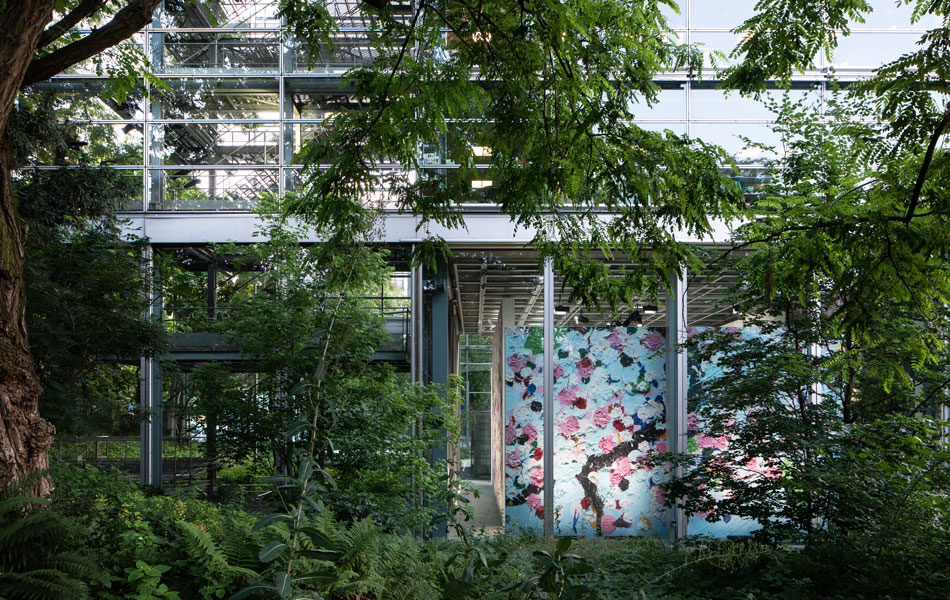
Damien Hirst
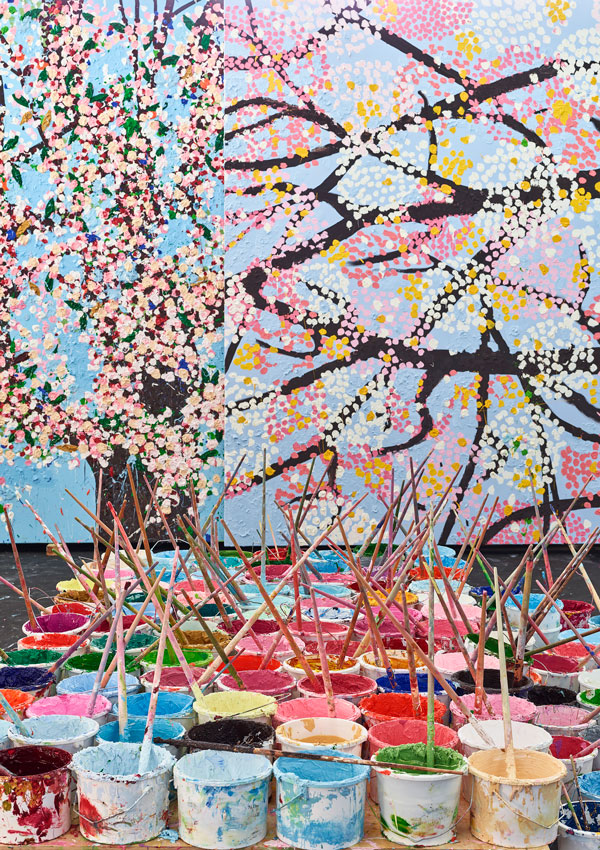
Damien Hirst
It took Damien Hirst three years to complete 107 new paintings, of which a grand total of 30 are on display at the Cartier Foundation in Paris. An extraordinary “pictorial gesture”, as intended by the artist. Both tinged with hedonism and provocative, this creative impulse marks a return to the Briton’s roots as a key member of the famous Young British Artists. This group, as defined by exhibitions at the Saatchi Gallery in London during the 1990s, helped to break conventions and to pave the way for the new popularity of modern art. This genre is still debated in society.
Butterflies and cows, as well as human skulls, flies and skilfully manipulated sharks have long haunted the world of contemporary art and the imagination of the public. More recent internationally-recognised works by the English artist Damien Hirst, a true star of omnipresent art during the 2000s, have almost eclipsed his first pieces dating from the late 1980s. Nevertheless, these earlier works are regarded as masterpieces. Among them is Medicine Cabinets, in which gleaming, immaculate, oversized medicine cabinets are filled with real and artificial pills, and medicine boxes are arranged like precious gems. Always against the grain of his own practice, the artist has recently gained recognition for his auction using non-fungible tokens. The famous “NFTs”: these ephemeral digital works are seen as a revolution in the world and the contemporary art market. An opportunistic artist? As the art critic Gilda Williams perfectly highlights in the catalogue accompanying the “Cherry Blossoms” exhibition, Damien Hirst is “a British artist with an American touch”.
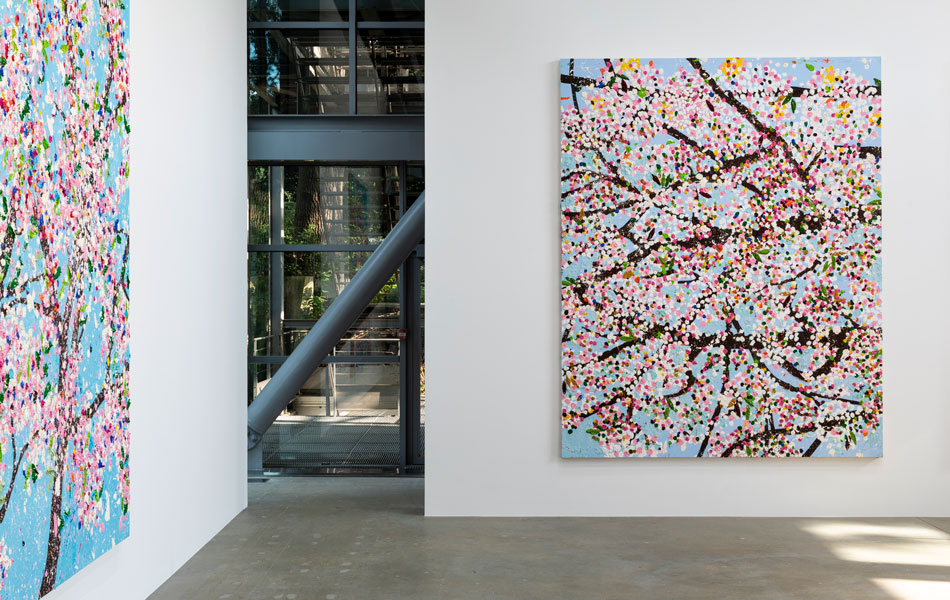
A radical set of canvases inspired by Impressionism and action painting
A return to grace orchestrated by Damien Hirst himself at the Cartier Foundation for Contemporary Art, “Cherry Blossoms” clearly acknowledges its influences. These include the great movements of 20th century art, such as Impressionism, Japanese landscapes, and the Water Lilies series by Claude Monet. This classic and immersive exhibition is also clearly inspired by the staging of the Musée de l’Orangerie, which is also in Paris. Gestural abstraction à la Jackson Pollock, the master of American Expressionist painting, is caught up in a simultaneously spontaneous and repetitive dynamic, used by Damien Hirst to create these canvases which are “bombarded with paint from start to finish” (sic). The total look aspect of this group of works with identical subjects was also intended by the artist, who has always enjoyed combining irony with virtuosity. The only truly original piece in this exhibition is a quadriptych, formed of four paintings. This picture piece from the “Cherry Blossoms” collection, which can be seen as a gigantic Rorschach test, reflects the vital need for optimism and enthusiasm today. The real value of each of these works, which are much more unusual than they seem, actually lies in their abundant detail and the recurrent joy (and not without second degree) that they bring to visitors – be they amateurs or the most demanding of art collectors.
Damien Hirst has ensured artistic continuity. This is clear in throughout his portfolio, from his cult Spot Paintings – colour point paintings on a white background, the first of which dates back to 1986, to his joyful saturated gouache pieces from the Visual Candy series from 1993 (an idea that he later revisited with his Veil Paintings and his Post-Impressionist compositions), and his latest sculptures of artefacts encrusted with coral, algae and other treasures from the sea.
